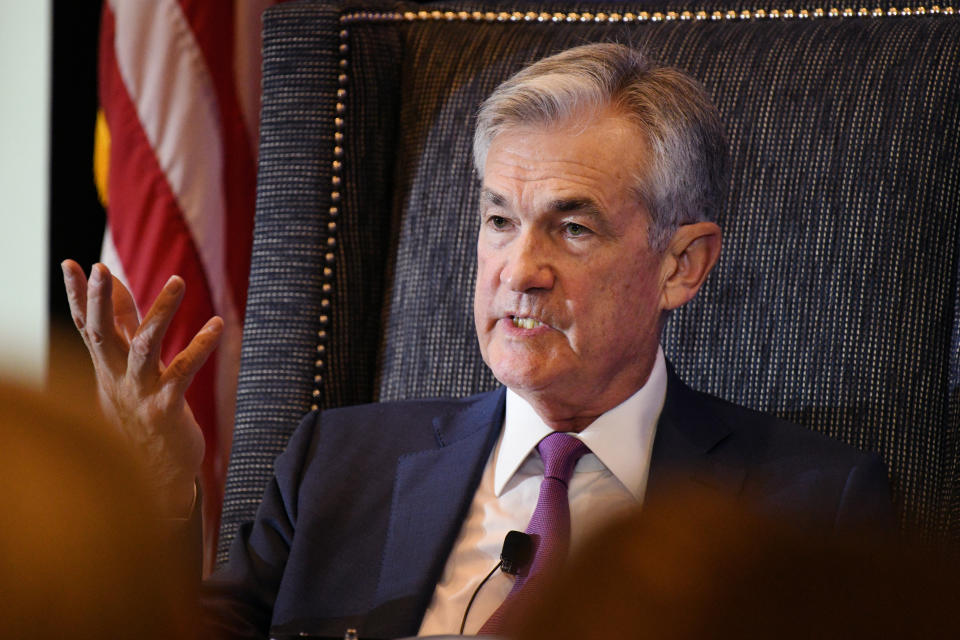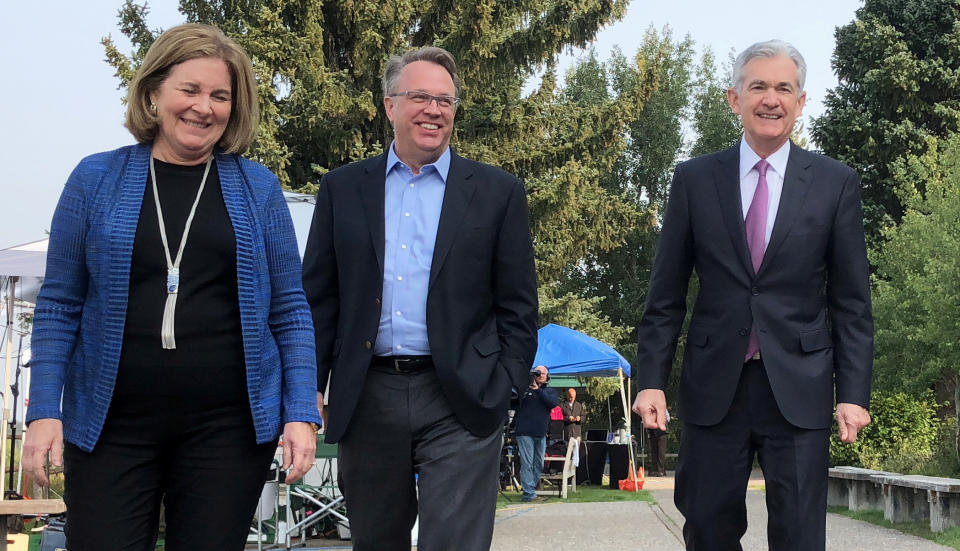Fed cuts rates for third consecutive time, no promise on a fourth cut
The Federal Reserve cut interest rates for the third consecutive time on Wednesday, but did not offer clues as to whether or not it will cut rates further.
The Federal Open Market Committee on Oct. 30 voted to reduce the benchmark interest rate by 25 basis points to a target range of between 1.5% to 1.75%. The FOMC statement justified the need for another cut by pointing to business fixed investment and exports that appear to “remain weak.”
The statement also notably removed language promising to “act as appropriate to sustain the expansion,” a phrase commonly used by Fed officials after it pivoted from the steady rate hikes of 2018 to the rate cuts in July and September.
The Fed now says it will “continue to monitor implications of incoming information for the economic outlook” in considering future moves.
Two FOMC voters, Kansas City Fed President Esther George and Boston Fed President Eric Rosengren, dissented from the decision. Both dissented against the July and September decisions to cut rates as well.

Downside risks
The statement was otherwise mostly unchanged from September. The Fed continued to describe the labor market as “strong,” as the September jobs report saw the unemployment rate fall to 3.5%.
On inflation, the Bureau of Economic Analysis reported core personal consumption expenditures (the Fed’s preferred measure) of 1.8% in August. But the Fed statement noted that inflation continues to run “below 2%.”
Hours before today announcement, the BEA also released its first print on third-quarter GDP, showing an annualized 1.9% pace of growth, above expectations of 1.6%. Consumption appeared to moderate, but heavy government spending helped boost U.S. growth.
The GDP figures also revealed a 15.3% decline in structures spending in the third quarter, just one example of the declining business fixed investment.

But Fed policymakers have said in recent months that the rate cuts are mostly in reaction to what Fed Chairman Jerome Powell has described as “downside risks,” such as trade concerns and geopolitical tension. Those risks, policymakers say, may not be seen in the data yet.
Since the Fed’s last meeting in September, developments on those downside risks have been mixed.
The trade war between the U.S. and China could be on its first steps to resolution as both sides work through a “phase one” trade deal, although the specific details of the agreement are still being hashed out.
Geopolitical tensions, meanwhile, do not appear to be letting up. Brexit was postponed yet again, protests continue in Hong Kong, and China’s economy appears to be slowing. Two weeks ago, the International Monetary Fund lowered its expectations for global growth in 2019 to the slowest pace since the financial crisis, at 3%.
Not QE
In his press conference, Powell will be closely watched for any commentary on the Fed’s mid-October announcement that it would resume growth of its balance sheet by buying about $60 billion of Treasury bills each month. The purchases are designed to increase the amount of bank reserves in the financial system, since a scarcity of available bank reserves for overnight lending led to a dramatic spike in interest rates in September.
The Fed says the purchases will continue at least into the second quarter of 2020.
Powell hinted that the Fed would resume “organic” balance sheet growth weeks ago, and clarified that the T-bill purchases are not like quantitative easing because they do not target agency debt or mortgage-backed securities for the specific purposes of further easing monetary policy. The Fed says organic growth is designed to “support the effective implementation” of its policies, and keep interest rates within its intended range.
The New York Fed, which manages the desk that provides temporary repurchase operations (or “repos”), has offered daily transactions with banks and broker-dealers to further ensure money market liquidity. The New York Fed last week expanded those overnight operations to provide at least $120 billion in repos daily.
The Fed’s final meeting for 2019 will take place December 10 and 11.
Brian Cheung is a reporter covering the banking industry and the intersection of finance and policy for Yahoo Finance. You can follow him on Twitter @bcheungz.
HUD Sec. Ben Carson announces initiative to push more bank-originated mortgages
'You don't need Libra': Central bankers skeptical of Facebook cryptocurrency
IMF: Trade resolution can only do so much to address 'synchronized slowdown'
‘The weirdest place in the world’: What the Fed missed in Jackson Hole
Read the latest financial and business news from Yahoo Finance
Follow Yahoo Finance on Twitter, Facebook, Instagram, Flipboard, SmartNews, LinkedIn, YouTube, and reddit.

